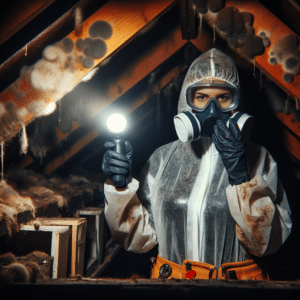What Causes Water Damage on Bamboo Floors?
Bamboo flooring is a popular choice for its durability and eco-friendly properties. However, like any other type of flooring, it is susceptible to water damage. Water damage on bamboo floors can be caused by a variety of factors, including:
- Spills and leaks from appliances and plumbing fixtures
- Flooding from natural disasters or burst pipes
- High humidity levels
- Poor installation or sealing
If not addressed promptly, water damage can cause your bamboo floors to warp, buckle, or even grow mold and mildew. It is important to take immediate action to prevent further damage and restore your floors to their original condition.
Steps to Fix Bamboo Floors with Water Damage
Step 1: Assess the Damage
The first step in fixing water-damaged bamboo floors is to assess the extent of the damage. This will help you determine the best course of action and whether you can fix the damage yourself or if you need to call in a professional mold remediation contractor.
Look for signs of warping or buckling, discoloration, and mold growth. Check the affected area for any soft or spongy spots, as these indicate that the water has seeped into the bamboo and caused damage.
Step 2: Dry the Area
Once you have assessed the damage, the next step is to dry the area as quickly as possible. Use a wet/dry vacuum or mop to remove any standing water on the floor. You can also use fans and dehumidifiers to speed up the drying process. Make sure to also open windows and doors for proper air circulation.
Step 3: Remove Damaged Pieces
If the damage is extensive, you may need to remove and replace the affected pieces of bamboo. Carefully remove the damaged pieces using a circular saw, making sure not to damage the surrounding floorboards. Once the damaged pieces are removed, thoroughly clean and dry the subfloor before installing replacement pieces.
Preventing Water Damage on Bamboo Floors
Prevention is always better than trying to fix water damage on bamboo floors. Here are some tips to help prevent water damage in the first place:
- Wipe up spills and leaks immediately
- Use rugs or mats in high-risk areas, such as in front of sinks and appliances
- Ensure proper ventilation in areas with high humidity, such as bathrooms and kitchens
- Regularly inspect and maintain your plumbing and appliances
- Choose a professional and reputable flooring contractor for installation
- Seal your bamboo floors with a high-quality sealant
Professional Help for Water-Damaged Bamboo Floors
If you are dealing with significant water damage on your bamboo floors, it is best to seek the help of a professional mold remediation contractor. They have the expertise, tools, and equipment to properly assess the damage and provide the necessary repairs. They can also help prevent future water damage by identifying and addressing any underlying issues.
In Conclusion
Water damage on bamboo floors can be a daunting issue, but it can be fixed with prompt action and proper maintenance. Remember to assess the damage, dry the area, and if necessary, remove and replace damaged pieces. Taking preventive measures can also help avoid costly repairs in the future. And if the damage is extensive, do not hesitate to seek the help of a professional mold remediation contractor to ensure the job is done correctly and efficiently.



